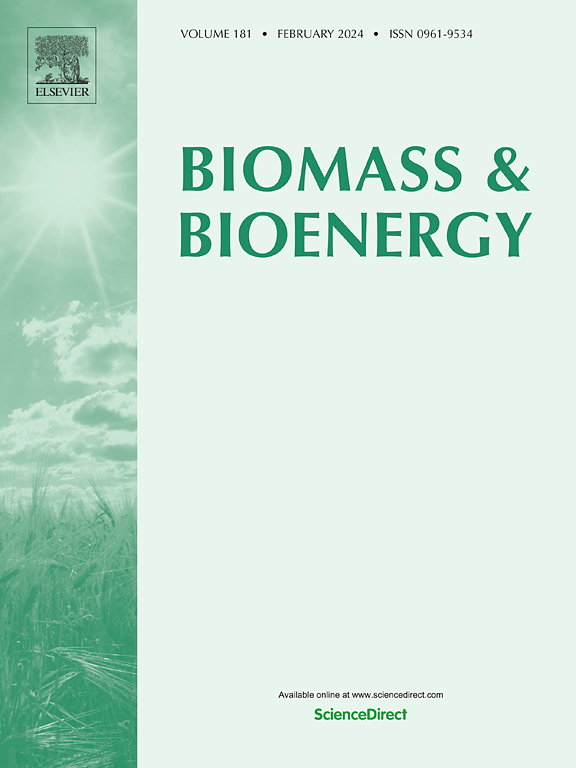Enhancing conversion and selectivity control in liquid-film dielectric barrier discharge plasma for bio-oil upgrading
IF 5.8
2区 生物学
Q1 AGRICULTURAL ENGINEERING
引用次数: 0
Abstract
Green upgrading of bio-oils significantly enhances their potential as future energy alternatives. Nonthermal plasma hydrodeoxygenation technology, an environmentally friendly and sustainable solution for upgrading bio-oils, bypasses the high temperatures, high pressures, and catalysts typically required. However, the impact of plasma-generated particles on the process remains insufficiently understood, limiting the effectiveness of deoxygenation efficiency and calorific value enhancement. Here we propose an innovative hydrodeoxygenation mechanism for plasma upgrading of bio-oil model compound (guaiacol), emphasizing the critical role of H radicals and electron energy in enhancing guaiacol conversion and tailoring product selectivity, respectively. Our findings, derived from an integrated approach of reactive molecular dynamics and density functional theory, complemented by experimental validation, reveal that H radicals substantially extend the oxygen-containing chemical bonds. This extension, alongside a marked reduction in the energy barriers for the cleavage of O-CH3, C-OCH3, and C-OH bonds by 58.2 %, 72.1 %, and 77.1 %, respectively, facilitates the conversion, yielding catechol as the main product. Moreover, within Ar plasma, nearly 80 % of electrons have bond-breaking energy, a figure that increases from 31.07 % to 74.41 % in H2 plasma with rising reduced electric field. Importantly, Ar plasma maintains high efficiency in cleaving C-OCH3 and C-OH bonds, driving the transition of primary products from catechol to phenol, anisole, and potentially to aromatic hydrocarbons. These insights offer guidance for optimizing reaction conditions in plasma bio-oil upgrading and contribute to the efficient utilization of biomass resources and environmental protection.

求助全文
约1分钟内获得全文
求助全文
来源期刊

Biomass & Bioenergy
工程技术-能源与燃料
CiteScore
11.50
自引率
3.30%
发文量
258
审稿时长
60 days
期刊介绍:
Biomass & Bioenergy is an international journal publishing original research papers and short communications, review articles and case studies on biological resources, chemical and biological processes, and biomass products for new renewable sources of energy and materials.
The scope of the journal extends to the environmental, management and economic aspects of biomass and bioenergy.
Key areas covered by the journal:
• Biomass: sources, energy crop production processes, genetic improvements, composition. Please note that research on these biomass subjects must be linked directly to bioenergy generation.
• Biological Residues: residues/rests from agricultural production, forestry and plantations (palm, sugar etc), processing industries, and municipal sources (MSW). Papers on the use of biomass residues through innovative processes/technological novelty and/or consideration of feedstock/system sustainability (or unsustainability) are welcomed. However waste treatment processes and pollution control or mitigation which are only tangentially related to bioenergy are not in the scope of the journal, as they are more suited to publications in the environmental arena. Papers that describe conventional waste streams (ie well described in existing literature) that do not empirically address ''new'' added value from the process are not suitable for submission to the journal.
• Bioenergy Processes: fermentations, thermochemical conversions, liquid and gaseous fuels, and petrochemical substitutes
• Bioenergy Utilization: direct combustion, gasification, electricity production, chemical processes, and by-product remediation
• Biomass and the Environment: carbon cycle, the net energy efficiency of bioenergy systems, assessment of sustainability, and biodiversity issues.
 求助内容:
求助内容: 应助结果提醒方式:
应助结果提醒方式:


